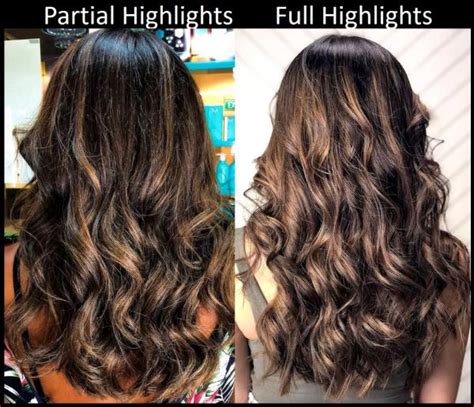When it comes to highlighting hair, there are two main methods: full highlight and partial highlight. Both techniques offer unique benefits, but it’s important to understand the differences before deciding which is right for you.

What Is a Full Highlight?
A full highlight involves applying bleach or color to all of your hair, from roots to ends. This technique creates a natural-looking, sun-kissed effect that adds depth and dimension to your hair.
Benefits:
- Evenly distributed color: Full highlights ensure that your hair color is consistent from root to tip.
- Natural-looking effect: The gradual transition of color from dark at the roots to lighter at the ends mimics the natural fading of the sun.
- Adds volume: The lighter strands create the illusion of more volume, making your hair appear thicker.
Drawbacks:
- Can be time-consuming: Full highlights take longer to apply than partial highlights.
- More damage: Bleaching all of your hair can cause dryness and damage, especially if it’s not done properly.
What Is a Partial Highlight?
A partial highlight involves applying color to only a portion of your hair, usually the top layer. This technique creates a more subtle, face-framing effect that draws attention to certain areas.
Benefits:
- Quicker application: Partial highlights can be done in less time than full highlights.
- Less damage: Since only a portion of your hair is bleached, there is less risk of damage.
- Versatile style: Partial highlights can be customized to create a variety of looks, from soft and natural to bolder and more dramatic.
Drawbacks:
- Not as even distribution: Partial highlights may not provide the same level of even distribution as full highlights.
- Less depth: The limited color transition can result in a less dimensional look than full highlights.
Which Option Is Right for You?
The best highlight technique for you depends on your individual preferences and hair goals. If you want a natural, sun-kissed look with even color distribution, a full highlight is a good option. If you prefer a more subtle, versatile style with less damage, a partial highlight is a better choice.
Full Highlight vs. Partial Highlight: A Comparison
| Characteristic | Full Highlight | Partial Highlight |
|---|---|---|
| Application time | Longer | Shorter |
| Hair damage | More | Less |
| Color distribution | Even | Not as even |
| Depth | More dimensional | Less dimensional |
| Customization | Limited | Versatile |
Customer Needs and Wants
Understanding the wants and needs of customers is essential in choosing the right highlight technique. Some key considerations include:
- Budget: Full highlights tend to be more expensive than partial highlights due to the longer application time.
- Hair condition: Damaged or weakened hair may not be suitable for full highlights.
- Hair texture: Fine or thin hair can benefit from full highlights to create the illusion of volume, while thicker hair may be better suited for partial highlights.
- Desired effect: If you want a bold and dramatic look, full highlights are a good option. If you prefer a more natural and subtle effect, partial highlights may be a better fit.
Tips and Tricks for Getting the Perfect Highlights
- Consult with a professional hair stylist to determine the best highlight technique for your hair type and goals.
- Use a high-quality hair color that is specifically formulated for highlighting.
- Follow the manufacturer’s instructions carefully to avoid damage.
- Use a deep conditioning treatment after highlighting to restore moisture.
- Protect your highlights from the sun and other environmental factors to prevent fading and damage.
New Applications for Highlight Techniques
Beyond traditional hair coloring, highlight techniques can be creatively applied to other areas, such as:
- Eyebrows: Highlighting eyebrows can create a more defined and youthful appearance.
- Nails: Adding highlights to nails can create a unique and eye-catching look.
- Clothing: Highlighting garments can add texture and interest to otherwise plain fabrics.
Conclusion
Whether you choose a full highlight or a partial highlight, there is a technique to meet your unique hair goals. By understanding the differences between these two methods and considering your individual needs and wants, you can make an informed decision and achieve the perfect highlighted look.
